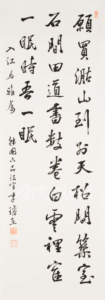Lee Jun was born on the 18th day of the 12th lunar month in 1859, in Bukcheong, Hamgyeong Province, during the Joseon Dynasty. His family origin (bon-gwan) was Jeonju, and he was also known by his courtesy name Sun-chil and his literary names Ilseong and Haesa. From an early age, he studied classical Chinese and later founded a private academy in his hometown of Bukcheong, dedicated to education. He eventually moved to the capital, Seoul, where he mingled with the Enlightenment Party figures, and in 1895, he enrolled in the Judicial Training Institute, graduating as part of its first class at the age of 36.
In 1896, Lee Jun was appointed as an assistant prosecutor at the Hanseong District Court. He soon made a name for himself by fearlessly prosecuting Prince Yi Jae-gyu for conspiring with the pro-Japanese cabinet to seize the lands of commoners through forged documents. He sought a ten-year prison sentence for Yi Jae-gyu, an unprecedented move against a member of the royal family. Lee also refused to comply with directives from his superiors to grant amnesty to designated individuals, leading him to file charges against his own superior, Kim Nak-heon. As a result, Lee was briefly imprisoned but was released after public outcry. Upon his release, he petitioned for the dismissal and punishment of the Justice Minister and other court officials for their corruption, though this led to his own dismissal just 33 days after his appointment.
Lee Jun was actively involved with the Enlightenment Party and became a member of the Independence Club in 1895. He later pursued legal studies at Waseda University in Japan. Upon returning to Korea, he resumed his involvement in nationalist activities, including those organized at the Sangdong Church, which served as a gathering place for progressive intellectuals. In 1905, he was appointed president of the National Education Association and devoted himself to educational reform, founding schools such as Boguang School and Oseong School.
In 1907, Lee Jun was selected as one of the special envoys, along with Lee Sang-seol and Lee Wi-jong, to attend the Second Hague Peace Conference. Their mission was to expose the illegitimacy of the Eulsa Treaty, which had been imposed on Korea by Japan. However, their diplomatic efforts were thwarted by Japan’s influence on the international stage, and they were denied entry to the conference. During the mission, Lee Jun passed away in The Hague under mysterious circumstances. While initially rumored to have committed seppuku, later investigations determined that he likely died of illness.
In 1962, Lee Jun was posthumously awarded the Order of Merit for National Foundation by the South Korean government. His remains, initially interred in The Hague, were returned to Seoul in 1963, and his statue now stands in Jangchungdan Park. The Lee Jun Memorial Hall and the Lee Jun Memorial Church have been established in The Hague to commemorate his legacy.
Translation:
When I purchase a lake and mountain, and journey to another world,
I will build a house amidst the pines and till fields between the rocks.
Within the white clouds, I will peruse a few scrolls of the Way,
And when the crane falls into slumber, I too shall take a moment to rest.

